
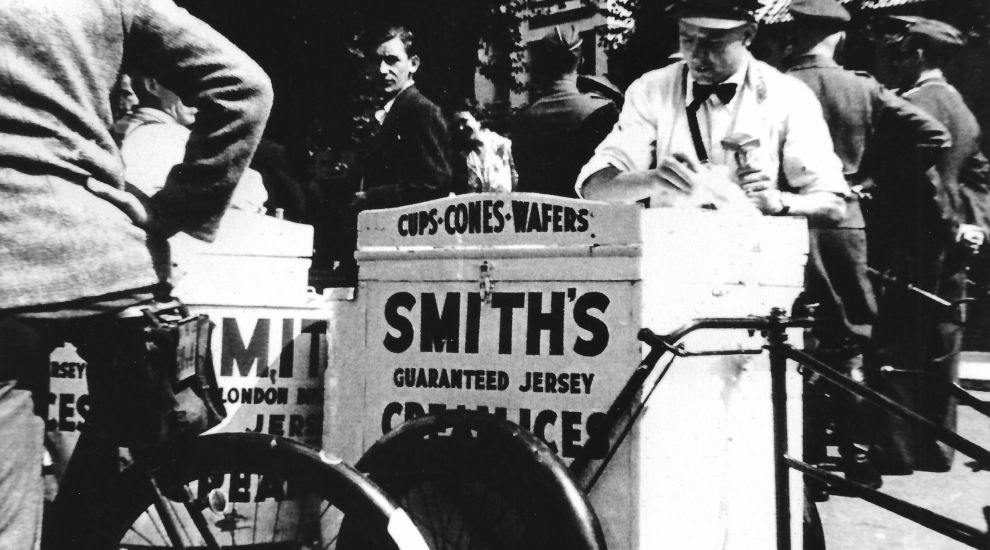

Did you know much of Cannon Street was once occupied by commercial buildings, which were the home of a long-running local business, Smith’s soft drinks and ice cream factory?
The company of A E Smith and Son Limited was established in 1894 by Albert Edward Smith. He had been a French polisher but according to a 1987 feature in the Evening Post detailing the history of the company, he saw more potential in the soft drinks business.
Although bottled water may seem like a relatively recent phenomenon, natural mineral water had been bottled and sold since the 1700s, with spa waters thought to have healing or restorative properties. Carbonated water was developed to mimic the qualities of certain naturally effervescent spring waters.
Albert’s business went from strength to strength and by 1933, he had expanded to making ice cream. By this time, the premises had been enlarged with the mineral water factory on one side of the road and ice cream production on the other.
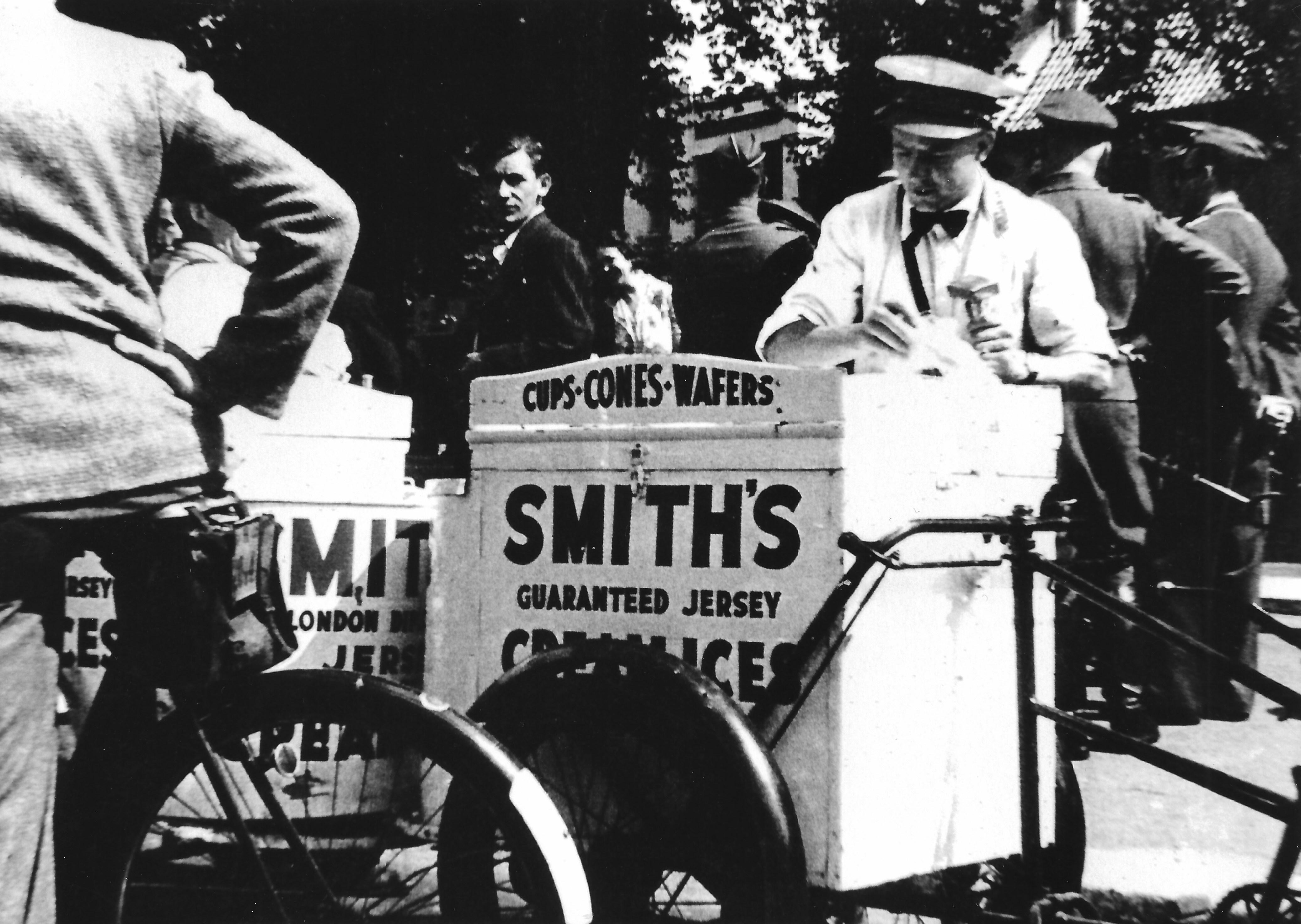
Pictured: Smith's ice-cream bicycle.
When Albert died in 1936, his son, Edward Joseph Smith, took over the running of the business. Edward quickly expanded by buying three neighbouring properties. These were numbered 12, 14 and 16, Cannon Street. He planned to demolish the existing cottages, together with the buildings that housed the mineral water factory, and replace them with a new, modern building, complete with shops, premises for his business on the ground floor and accommodation above.
The result was the Albert and Agnes Flats, which occupied about a third of the length of Cannon Street. The flats were named after Edward’s parents.
During the Second World War, records show that the Cannon Street premises was taken over by occupying forces for use as an armament repair works. The requisition order lists the property as ‘No 4 Garage, Cannon Street’ owned by Smith’s Ice Cream and requisitioned on 17 October 1942.
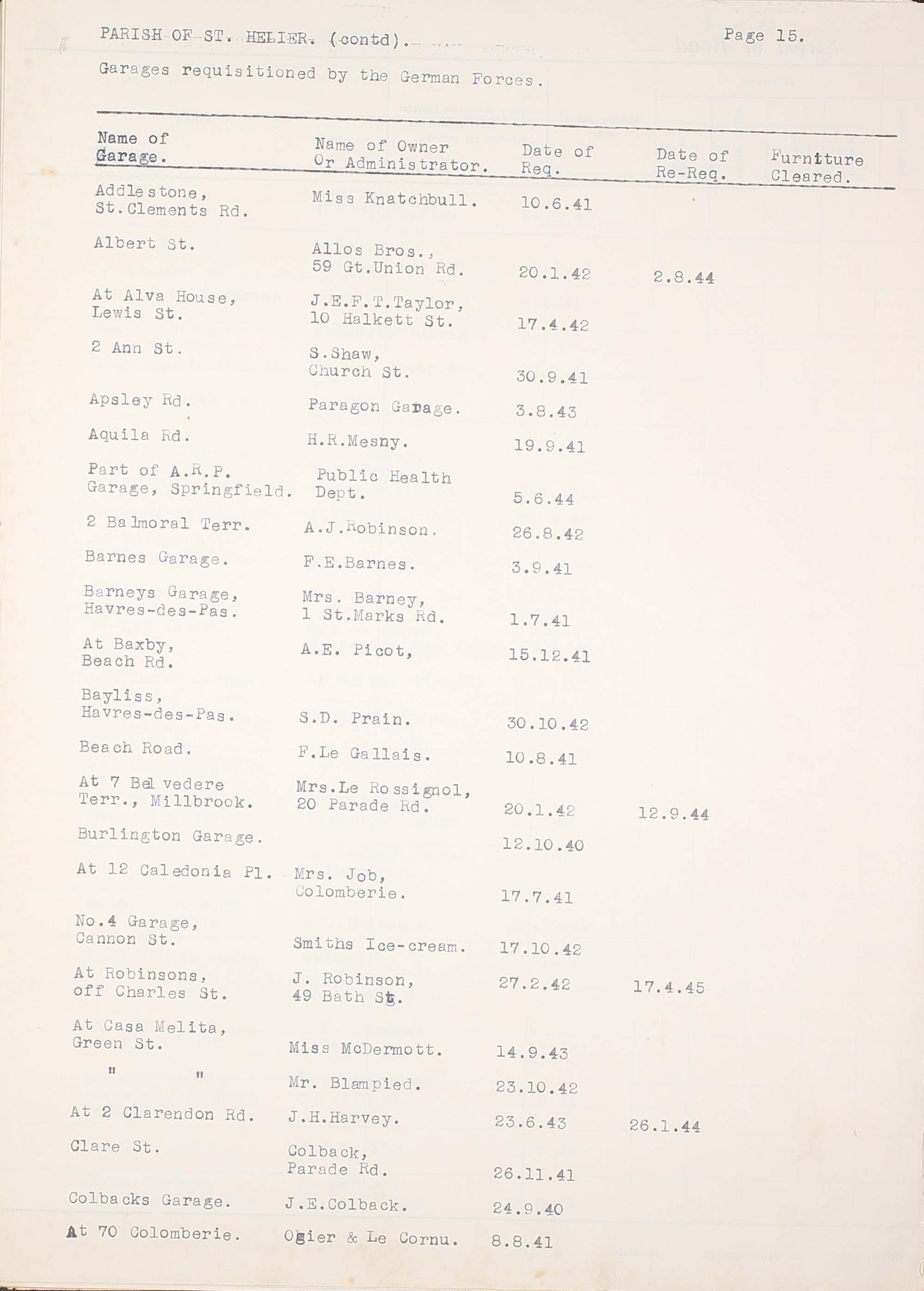
Pictured: The list of requisitioned buildings, including the Smith's Garage.
Edward and his family were among those who evacuated the Island. His application to return after the war shows that he was using his business experience working as a senior executive for the Rover Company. The family seemed to be living in North Wales but Edward’s second address in Solihull tallies with the location of one of Rover’s large factories opened in 1940 and dedicated at that time to the manufacture of aircraft engines and airframes.
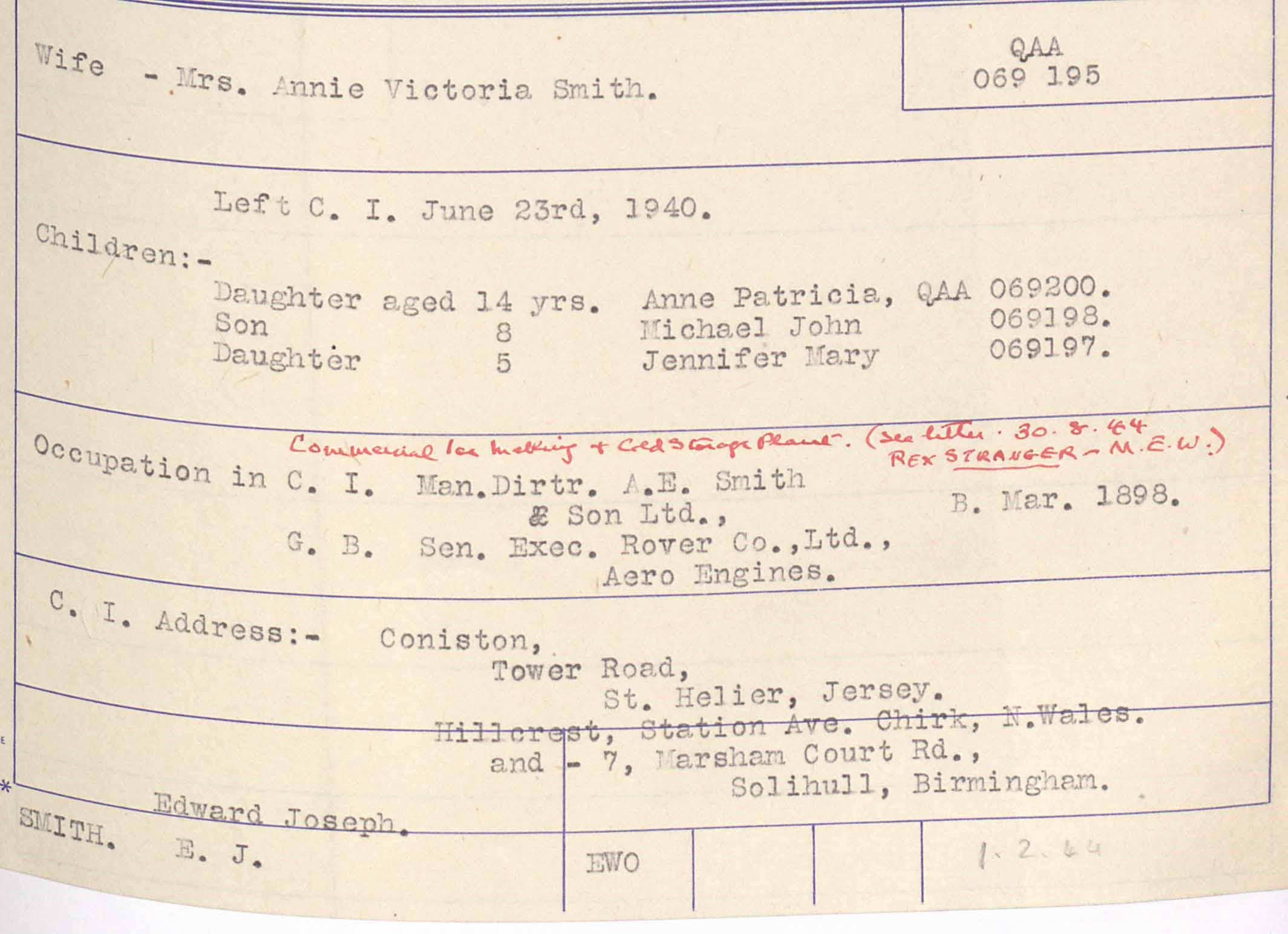
Pictured: Edward's application to return to Jersey.
The firm in Jersey continued to be run by Edward’s brother-in-law, Clarence Painter. His sister, Dorothy, also had a role in running the business. An account given by Dorothy after the war gives some further details. She relates that the Island armourer was operating in the garage, and required larger premises, so in January 1944 the mineral water factory next door was also requisitioned. Smiths were told that if they did not remove the plant machinery, the troops would remove it. Consequently, they emptied the factory and stored the machinery safely in the Smith family’s garage.
The company took over another factory in Hill Street and so were able to carry on with business. In March of that year, Dorothy was told that the authorities wished her to manufacture soda water for the troops. She tried to protest, saying among other things that the plant was not big enough, but the occupying forces took matters into their own hands and re-installed the plant on the site of Randall’s Brewery in Clare Street. For the remainder of the war, Smiths were obliged to make soda water for the German forces, for which they were paid.
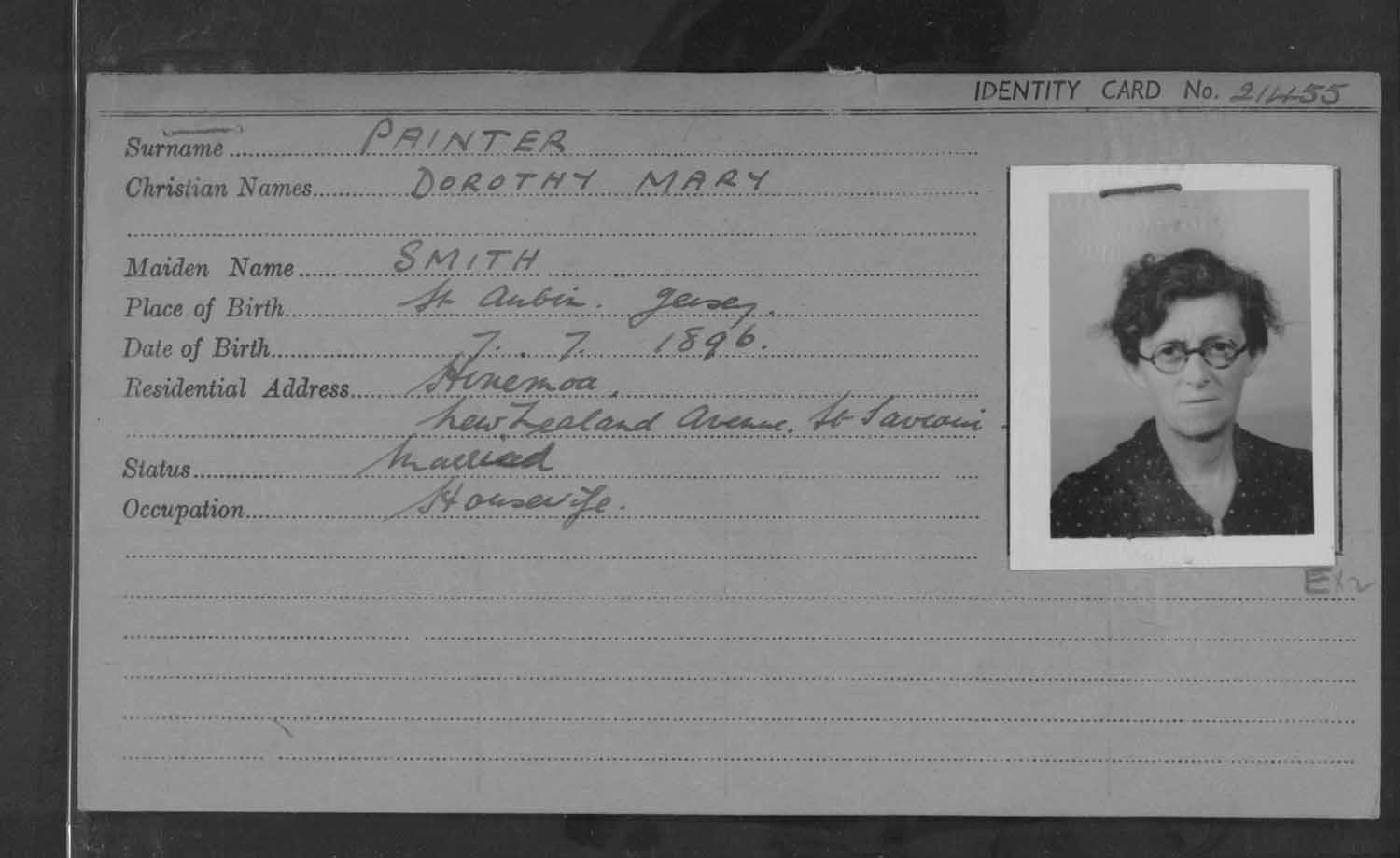
Pictured: Dorothy's occupation registration card.
Unfortunately, the war later took a very different turn for Clarence and his son, Peter. Their names have been engraved on the Lighthouse Memorial, which remembers the ‘Jersey 21’; the Islanders who did not return from camps and prisons after the war.
This article, put together by Archivist Rowland Quintaine, only touches on some of the stories of the Cannon Street and Clare Street area.
If you would like to find out more, Jersey Archive will be hosting a free talk this Saturday 16 July at 10:00 as part of the ‘What’s Your Town’s Story?’ series. If you would like to book your place, please call 833300 or email archives@jerseyheritage.org.
The Archive is also open from 09:00 to 13:00 on Saturday for general research.
The history of the Sarum on New St. John's Road
Snowballs and 'fowl' play in court
The 'astrologer' of King Street
The 'ups and downs' of a Queen Street pub
Manslaughter and drunken mayhem by the Town Church
Comments
Comments on this story express the views of the commentator only, not Bailiwick Publishing. We are unable to guarantee the accuracy of any of those comments.